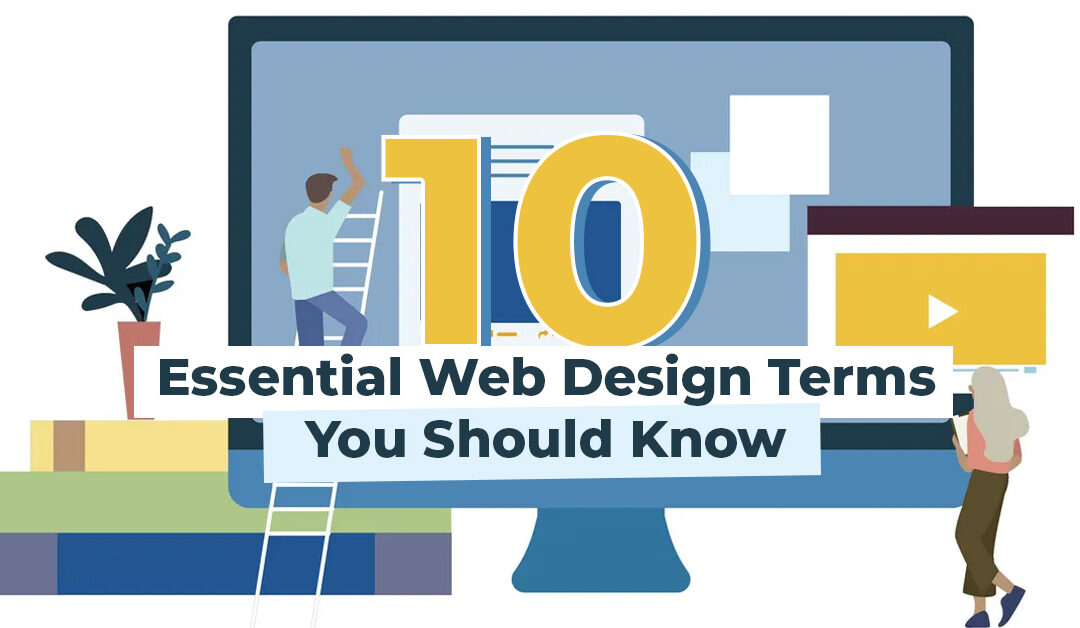Web design is a dynamic field that encompasses a wide range of technical and creative concepts. For beginners and even those familiar with the industry, understanding the jargon used in web design can be challenging. In this blog post, we will unravel 10 key terms commonly used in web design, providing clear explanations to help you navigate this fascinating realm with confidence.
- Responsive Design: Responsive design refers to the practice of creating websites that adapt and optimize their layout and content based on the device and screen size used by the visitor. By employing fluid grids, flexible images, and media queries, responsive design ensures an optimal user experience across a variety of devices, including desktops, tablets, and smartphones.
- UX/UI Design: User Experience (UX) and User Interface (UI) design are essential aspects of creating user-centric websites. UX design focuses on enhancing user satisfaction by improving usability, accessibility, and overall interaction with the website. UI design, on the other hand, deals with the visual elements and aesthetics of the interface, including layout, typography, and color schemes.
- Wireframe: A wireframe is a visual representation or blueprint of a website’s structure and layout. It provides a skeletal framework that outlines the placement of content, navigation, and user interface elements. Wireframes help designers and stakeholders visualize the website’s functionality and organization before proceeding to the detailed design phase.
- Grid System: The grid system is a framework that aids in organizing and aligning elements within a website’s layout. It consists of horizontal and vertical lines that create a series of columns and rows. By adhering to a grid system, designers can achieve visual harmony, balance, and consistency in their designs.
- Typography: Typography refers to the art and technique of arranging typefaces in a visually appealing and readable manner. It involves selecting appropriate fonts, font sizes, line spacing, and letter spacing to ensure legibility and convey the desired tone and message. Typography plays a crucial role in creating an engaging and user-friendly website.
- Call-to-Action (CTA): A call-to-action is a design element, such as a button or link, that prompts users to take a specific action, such as making a purchase, subscribing to a newsletter, or starting a free trial. CTAs are strategically placed throughout a website to guide users towards desired conversions and engagements.
- Navigation: Navigation refers to the system or structure that allows users to move through a website and access its various pages or sections. It typically includes menus, links, and navigation bars, providing intuitive pathways for users to explore and find desired information.
- SEO: SEO, or Search Engine Optimization, is the practice of improving a website’s visibility and ranking in search engine results. It involves optimizing various elements, such as keywords, meta tags, site speed, and mobile-friendliness, to enhance organic search traffic and attract relevant visitors to the website. For more information on SEO, check out our post “Find out what SEO is and what it isn’t“.
- CMS: CMS stands for Content Management System. It is a software platform that enables users to create, manage, and update website content without requiring extensive technical knowledge. Popular CMS platforms include WordPress, Drupal, and Joomla.
- Browser Compatibility: Browser compatibility refers to the ability of a website to function and appear consistently across different web browsers, such as Chrome, Firefox, Safari, and Internet Explorer. Designers must ensure that their websites are tested and optimized for compatibility to provide a seamless experience for users regardless of the browser they are using.
By familiarizing yourself with these fundamental web design terms, you’ll gain a better understanding of the concepts and techniques used in the industry. From responsive design and UX/UI to wireframes and browser compatibility, each term plays a crucial role in creating visually appealing, user-friendly, and successful websites. Embrace these concepts, continue learning, and explore further to enhance your web design skills and create exceptional online experiences.
